 St Mary's Church, Dymock
St Mary's Church, Dymock
| Admin | |||
| . | Home | Contents | |
| H&S Policy | People Safety | Grave Yard | |
The Church & The World
Faith & Care
Faith & Care
Things Past
People & Features
People & Features
The Big Picture - Authority's Response
Giving Life Meaning
Giving Life Meaning

Click on any Title in BLUE to go to that Module
Print this page

Module 4/0 - Introduction

.
Module 1: explored how God made himself known to humanity, gave us Laws for living together in society, and how humanity finds it impossible to keep those Laws well enough.
.
Module 2: revealed what God did to help us understand and apply his Laws (he came himself in the form of Jesus Christ) and how he put right our relationship with him that’s spoilt by our disobedience, and so save us from being separated from him.
.
Module 3: revealed how his disciples then spread Jesus’ teaching out into the world and began the Christian Church.
.
This Module 4: now explores the development of the Church after the Apostles died, by exploring some of the people and events that developed the church into what it is today.
Big Picture Module 4
- 4/0: Introduction (This page)
- 4/1: The Church is Created
- 4/2: The Church Expands
- 4/3: Christianty in Europe
- 4/4: Christianty in Btitain & Ireland
- 4/5: Control, Renewal & Reform
- 4/6: Political & Religious Turmpoil
- 4/7: The 'Modern' Era
- 4/8: The 'Present' Era
.
(Return to Modulo Main Menu)
Module 4/1 - The Church is Created
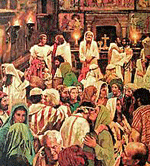
(Return to top)
- After nearly 400 years of scholarly thinking, the 'Church Fathers' defined what it all means in 'The Nicene Creed'.
(Return to top)
Module 4/2 - The Church Expands
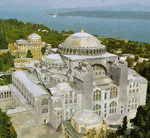
- In the meantime, a deeply spiritual man in Saudi Arabia (Mohammed) had ‘revelations’ leading to the creation of an alternative faith, Islam, that would threaten Christianity.
(Return to top)
Module 4/3 - Christinity in Europe
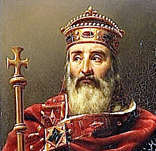
(Return to top)
- The church and politics become even further inter-related and moved some way away from the teaching of Jesus’ – some even argued it had become corrupt.
(Return to top)
Module 4/4 - Christinity in Britain & Ireland
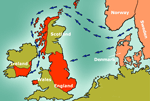
- To a greater or lesser extent, Christian principles guided the kings over the next 1,000 years as the kingdom developed.
(Return to top)
Module 4/5 - Control, Renewal & Reform
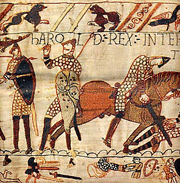
(Return to top)
- People began protesting at the church's corruption and non-Biblical teaching, which resulted in Reform and a split into 'Catholic' and 'Protestant'.
(Return to top)
Module 4/6 - Religious & Political Turmoil
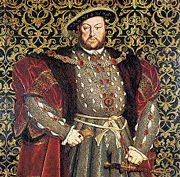
After Henry (and a short reign by his Protestant son Edward VI), his daughter Mary I became queen, persecuting Protestants and reintroducing Roman Catholic practices, but she died after 5 years and was succeeded by her sister Elizabeth I who changed back to Protestant ways again. Following Elizabeth came James I, who had an authorised version of the Bible and Prayer Book produced in English. He was followed by Charles I, whose policies so upset the Scots, the Church, and Parliament that he was removed from the throne and beheaded as a 'traitor against the people'.
- Henry VIII initially wrote a paper against Martin Luther, so was praised by the Pope as 'Defender of the Faith'; but after his divorce, the Pope banned him from the Roman church.
.
- Although he allowed some Protestant reforms, Henry remained a Roman Catholic all his life.
.
- Charles I was replaced by Oliver Cromwell and a non-monarchy 'Commonwealth' that was managed by Parliament, with strict 'Puritan' ways of practicing religion.
(Return to top)
Module 4/7 - The 'Modern' Era

Other philosophies developed based around humanity and not God; some even denying the existence of God, whilst yet others developed Evangelism (outreach) in an attempt to convert people to Christianity and spread the Gospel message
(Return to top)
- Meanwhile, a long series of monarchs led Britain, sometimes causing struggles between Monarch and State by ignoring the will of their nobles, then later ignoring parliament and passing various laws themselves that affected both the State and the Church too.
(Return to top)
Module 4/8 - The 'Present' Era
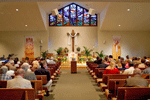
Scientific and industrial revolutions improved the lifestyle of ordinary people beyond earlier imagination, but the inter-relationship between State and Church was further reduced with a serious decline in Christian belief and church membership. The established church took back much management of its own affairs from the State and sought ways to stem the decline – but not yet with much success.
- Queen Victoria and her successors continued to express their view and influence Parliament in both State and Church affairs.
.
- Church membership in England initially remained high but a reduction in belief and membership accelerated in the Western nations, although belief grew well in Africa and parts of Asia.
(Return to top)